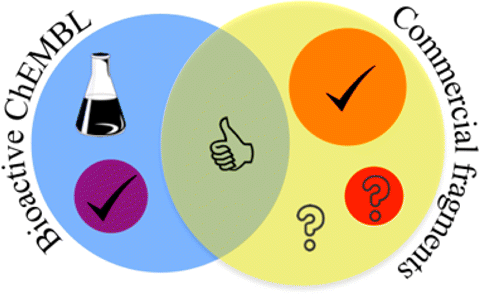Research in the Brenk lab

Main content
Structure-based drug design is a process of developing new medicines by analyzing the 3D structure of a specific target (proteins or other macromolecules that are involved in diseases) and then designing a drug that specifically binds to the target. The idea is to computationally design a molecule that fits perfectly into the specific binding site of the target, thereby blocking its activity or altering its function in a way that can help treat the disease. By using computer modeling and other advanced techniques, one can predict how a drug molecule will interact with the target and make modifications to the molecule to optimize its effectiveness. This approach is often used for the discovery for potent ligands. However, it is still prune to the prediction of false positive and false negatives, thus hampering its success.
The overall research goal of the Brenk group is to improve methods used for structure-based drug design and to apply these methods to design inhibitors for enzymes with biological relevance. A key point in our research is the interplay of theoretical and experimental methods.
Currently, we are working on the following topics:
1. RNA-ligand interactions
We are developing methods to predict the binding modes and affinities of RNA-ligand complexes and the druggabilty of RNA targets. Further, we are exploiting these methods to discover ligands for riboswitches which are novel targets for antibiotics.
Related News pages:
- eHACS
- Exploration of the TPP riboswitch as a tartet for antibiotics
- Chartering chemical space for riboswitch ligands (This is a partner project of Digital Life Norway.)
- Respond3 - Towards better computational approaches and responsible innovation strategies in early drug discovery
- Recorded lecture
Selected publications:
- Rekand, I. H.; Brenk, R. DrugPred_RNA-A Tool for Structure-Based Druggability Predictions for RNA Binding Sites. J Chem Inf Model 2021.[Pubmed]|[DOI]
- Lundquist, K. P.; Panchal, V.; Gotfredsen, C. H.; Brenk, R.; Clausen, M. H. Fragment-Based Drug Discovery for RNA Targets. ChemMedChem 2021. [Pubmed]|[DOI]
- Daldrop P, Reyes FE, Robinson DA, Hammond CM, Lilley DM, Batey RT, Brenk R. Novel Ligands for a Purine Riboswitch discovered by RNA-Ligand Docking. Chem Biol 18 (3), 324-35 (2011). [Pubmed | DOI]
- Rekand IH, Brenk R. Ligand design for riboswitches, an emerging target class for novel antibiotics. Future Med Chem. 2017 Sep;9(14):1649-1662. [Pubmed | DOI | Post-print version]
- Wehler, T.; Brenk, R. Structure-Based Discovery of Small Molecules Binding to RNA. In RNA Therapeutics; Topics in Medicinal Chemistry; Springer, 2017; pp 47–77. [DOI]
- Daldrop P, Brenk R. Structure-Based Virtual Screening for the Identification of RNA-Binding Ligands. Methods Mol Biol 1103, 127-39 (2014). [Pubmed | DOI]
2. A better understanding of protein-ligand interactions
Ideally, we should be able to predict the binding affinity of a ligand based on the structure of the protein-ligand complex. However, we are still far away from reaching this goal. Therefore, we are using a combination of biophysical and computational methods to improve our understanding of protein-ligand interactions. A particular focus in this context is to better undertand the driving forces of selective inhibiton in highly conserved binding sites. In addition, we are developing methods to predict how likely it is to to find a drug-like ligand for a given binding site and which physico-chemical properties this ligand will likely have. Further, we are exploiting the vast data about protein-ligand complexes to develop scoring functions to predict the binding affinities of ligands to their targets. For this task, we are using modern machine learning methods.
Related News pages:
Article published in special issue about women in medicinal chemistry
- Price for oral presentation
- Respond3 - Towards better computational approaches and responsible innovation strategies in early drug discovery
Selected publications:
- Schuck, B.; Brenk, R. On the Hunt for Metalloenzyme Inhibitors: Investigating the Presence of Metal-Coordinating Compounds in Screening Libraries and Chemical Spaces. Archiv der Pharmazie, e2300648. [DOI|ChemRvix]
- Kersten C, Fleischer E, Kehrein J, Borek C, Jaenicke E, Sotriffer C, Brenk R. How To Design Selective Ligands for Highly Conserved Binding Sites: A Case Study Using N-Myristoyltransferases as a Model System. J Med Chem. J Med Chem. 2020 Mar 12;63(5):2095-2113 [Pubmed | DOI]
- Sarkar A, Brenk R. To Hit or Not to Hit, That Is the Question - Genome-wide Structure-Based Druggability Predictions for Pseudomonas aeruginosa Proteins. PLoS One 10 (9), e0137279 (2015). [Pubmed | DOI]
- Krasowski A, Muthas D, Sarkar A, Schmitt S, Brenk R. DrugPred: A Structure-Based Approach To Predict Protein Druggability Developed Using an Extensive Nonredundant Data Set. J Chem Inf Model 51 (11), 2829-42 (2011). [Pubmed | DOI]
3. Structure-based ligand design
In collaboration with other labs we are working on the structure-based design of ligands for a variety of targets. A partical focus on this work is the discovery for starting points for new antibiotics.
Related News pages:
- Towards the discovery of new antibiotics in the lab
- Drug Discovery get together
- Exploration of the TPP riboswitch as a tartet for antibiotics
- Structure-based exploration of new targets for antibiotics
- Webinar
Selected publications:
- Espeland, L. O.; Georgiou, C.; Klein, R.; Bhukya, H.; Haug, B. E.; Underhaug, J.; Mainkar, P. S.; Brenk, R. An Experimental Toolbox for Structure-Based Hit Discovery for P. aeruginosa FabF, a Promising Target for Antibiotics. ChemMedChem 2021. [Pubmed]|[DOI]
- Klein R, Cendron L, Montanari M, Bellio P, Celenza G, Maso L, Tondi D, Brenk R. Targeting the Class A Carbapenemase GES-5 via Virtual Screening. Biomolecules. 2020 Feb 14;10(2). pii: E304.[Pubmed | DOI]
- Klein R, Linciano P, Celenza G, Bellio P, Papaioannou S, Blazquez J, Cendron L, Brenk R, Tondi D. In silico identification and experimental validation of hits active against KPC-2 β-lactamase. PLoS One. 2018 Nov 29;13(11):e0203241. [Pubmed | DOI | bioRxiv]
- Urich R, Wishart G, Kiczun M, Richters A, Tidten-Luksch N, Rauh D, Sherborne B, Wyatt PG, Brenk R. De novo design of protein kinase inhibitors by in silico identification of hinge region-binding fragments. ACS Chem Biol 8 (5), 1044-52 (2013). [Pubmed | DOI]
- Frearson JA, Brand S, McElroy SP, Cleghorn LA, Smid O, Stojanovski L, Price HP, Guther ML, Torrie LS, Robinson DA, Hallyburton I, Mpamhanga CP, Brannigan JA, Wilkinson AJ, Hodgkinson M, Hui R, Qiu W, Raimi OG, van Aalten DM, Brenk R, Gilbert IH, Read KD, Fairlamb AH, Ferguson MA, Smith DF, Wyatt PG. N-myristoyltransferase inhibitors as new leads to treat sleeping sickness. Nature 464 (7289), 728-32 (2010). [Pubmed | DOI | F1000 recommended]



